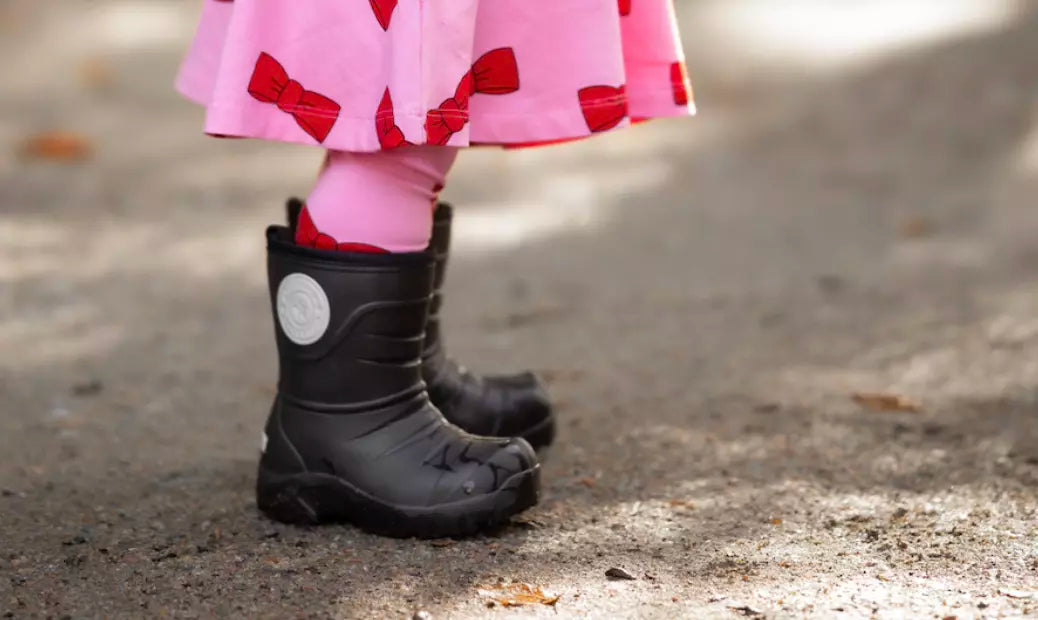How should you think about the size of shell clothes? It is important that there is room for extra layers under the shell clothes. You should be able to wear an extra sweater and fleece under the shell jacket without it being tight over the shoulders. The child should be able to stretch their arms straight up without the stomach showing or the sleeves riding up over the wrists.
The size of the shell pants should also have room for mid-layers, and the child should be able to sit down without it being tight over the backside. Although it can be tempting to buy shell pants that are a bit large so the child can grow into them, it is important that the leg openings do not go down under the feet or shoes, as they can wear out unnecessarily.
Try with shoes and make sure it isn't tight when the footrests are attached under the shoes. A few high knee lifts, climbing onto a table, and crawling around a bit can usually be a good test to see if you have the right size.
To simplify the choice of outerwear, we have a number of guides that we recommend you read.
- If you don't know which outerwear to choose, you can read a guide for that HERE.
- If you want to learn more about the layer-on-layer principle, you can read HERE.
- If you want to know the difference between shell clothes and rainwear as well as their different functions, you can read HERE.






